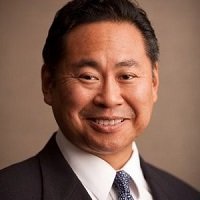“LawComm” in the White House C-Suite
Shan Wu, Partner, Wu, Grohovsky & Whipple, PLLCThe fabled West Wing of the White House is arguably the most powerful C-Suite in the world. As Spiderman teaches us: “with great power comes great responsibility” and it is equally true to say that with great power comes enormous communications strategy challenges. The current, near hourly breaking news cycle of legal crises involving the present CEO of the West Wing – President Donald J. Trump – provides a historic opportunity to see both the best and worst of legal communications (“LawComm”). Here are three take-aways from how Team Trump has handled the crises that are equally applicable to other C-Suites.
Consistent Leadership and Strategy
At various times, Ty Cobb, Emmett Flood, John Dowd, Jay Sekulow, Don McGahn, and, notably now, Rudy Giuliani have all appeared to lead and speak for the legal team. This is a problem. To understand the roots of this problem we need to first know that Team Trump consistsof lawyers working for the Office of the President (government lawyers) and personal lawyers working for the President (private lawyers). This model derives from the Watergate era and was also adopted by the Clinton administration. For it to work, you need consistency and you need clearly defined leadership roles for the government and private spheres. Team Trump suffers from a lack of both.Worse, the legal team’s strategy appears wildly inconsistent. Dowd and Cobb’s strategy of cooperation with Special Counsel Mueller’s Office differ markedly from Sekulow and Giuliani’s publicly confrontational style. Emmett Flood prefers to stay quiet in the background. And in a truly bizarre twist, Don McGahn has been quietly cooperating with the Mueller team for over 30 hours worth of interviews – the content of which remains essentially unknown to the rest of the legal team. Of course, this kind of chaos leads to chaotic messaging leaving the public guessing as to the true direction of the President’s legal strategy.
Law & Communications Must be Seamlessly Interwoven
Ideally, the legal strategy devised by lawyers is seamlessly meshed with the communications strategy devised by the communicators. In this best practices scenario, the communicator facing the public can either be a lawyer or communications specialist. The next best option is to at least keep them separate from each other. That is, lawyers may devise legal strategy while communicators face the public.Team Trump certainly does not seamlessly integrate legal strategy with communication. Nor do they clearly separate legal strategy from public statements. Instead, they commit they cardinal sin of having lawyers sound like public relations specialists. Rudy Giuliani’s ever-presence on news shows perfectly illustrates this worst-practices model. While at times Giuliani displays skill at advancing a message, he undercuts himself by changing his message frequently and even the most careful listener finds themselves befuddled by how his messages relate to his legal analysis. Most notably, he attempted to explain his complete reversal on whether Trump had ever asked former FBI director, James Comey, to “go easy” on Michael Flynn by claiming he was using the legal strategy of arguing in the alternative.
The Client Must Agree to Thorough Preparation Before Speaking Publicly
I will concede up front that President Trump seems to be a client lacking the ability to give a disciplined message. Nonetheless, this must be the achieved goal of a successful LawComm strategy. The client must be persuaded that any direct public statements are risky and must be carefully vetted. Nobody is vetting Trump’s tweets done at 1am in the morning.The client must also be persuaded that they need to be thoroughly briefed on facts and law. It is not an excuse to say that the client is difficult. In Trump’s case, the inability of his legal team to persuade him to make fully informed legal statements has left him in a position where any agreement to a formal interview with Mueller’s team and/or a grand jury appearance, exposes him to questioning about a bewildering volume of publicly made inconsistent statements.In sum, the missteps of the Trump White House teach that basic best practices must never be ignored. Whether the business in question is production, services, or politics, C-Suites ignore the basics of best practices at their peril.
 About the Author: Shan Wu is a former federal prosecutor whose law practice focuses on white-collar, criminal and college student defense matters. From 1999-2000, Shan served as Counsel to Attorney General Janet Reno, advising her on criminal and civil cases and investigations, congressional oversight, and legislative review. His responsibilities included serving as liaison to the FBI, DEA, Criminal Division, Executive Office of United States Attorneys, National Institute of Justice, and White House Counsel’s Office.
About the Author: Shan Wu is a former federal prosecutor whose law practice focuses on white-collar, criminal and college student defense matters. From 1999-2000, Shan served as Counsel to Attorney General Janet Reno, advising her on criminal and civil cases and investigations, congressional oversight, and legislative review. His responsibilities included serving as liaison to the FBI, DEA, Criminal Division, Executive Office of United States Attorneys, National Institute of Justice, and White House Counsel’s Office.
A consummate litigator, Shan has tried over twenty-five cases to jury verdict, argued appellate cases in the both local and federal court, led large-scale criminal investigations, litigated complex commercial cases, and counseled clients at all stages of criminal and civil investigations. As a federal prosecutor, he pioneered the use of expert testimony in domestic violence cases and, along with co-counsel, secured the first life-without-parole sentence for a serial rapist ever imposed in the District of Columbia. His outstanding legal work in the government was recognized through numerous Special Achievement Awards from the Justice Department as well as awards conveyed by law enforcement agencies and community groups.
Shan contributes regularly to CNN as a opinion writer as well as a CNN Legal Analyst. The views here are strictly his own.